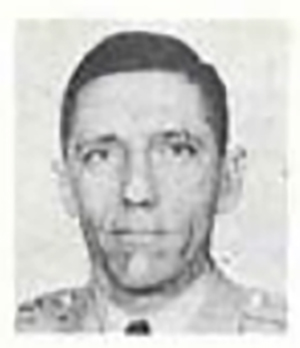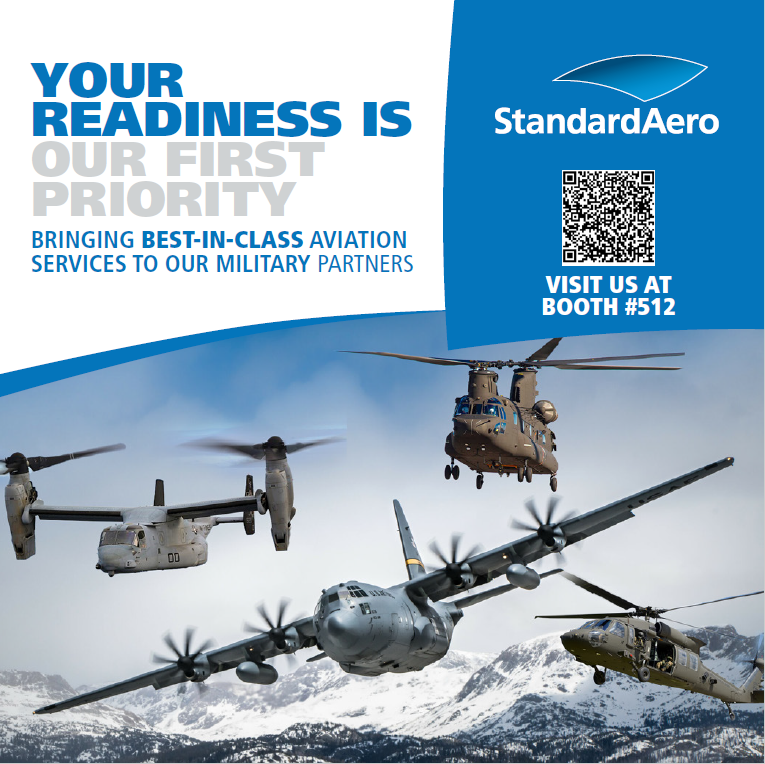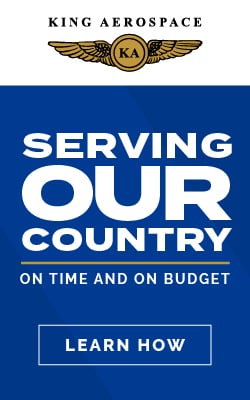Looking Back, October 2023
By Mark Albertson
“Which Way Did He Go? Up!”
By Lieutenant Colonel Jack W. Hemingway
Army War College
Carlisle Barracks, Pennsylvania
Edited by Mark Albertson
Source: Pages 228, 250-252, Army Aviation, Vol. 7, No. 6, Army Aviation Publications,
Westport, Ct., June 22, 1959.
* * * * *

Lieutenant Colonel Jack W. Hemingway, received his commission in 1942 by way of the Citizens Military Training Program. Following his assignment to the 35 th Infantry Division, he joined the 78 th and fought with that division on the European Theater of Operations. A unit commander at Camp McCoy, Wisconsin after 1945, he was later transferred to Japan and assigned to GHQ, SCAP. Next he was sent to Camp Carson, where he served as a company commander and later as battalion S3 with the 14 th Regimental Combat Team before he was reassigned to Fifth Army Headquarters. In Korea, he was assistant G3 of the 40 th Infantry Division, and battalion commander and executive officer of the 223 rd Infantry Regiment. Upon return to the United States, he served on Third Army HQ, followed by duty with the Command and Staff Department at the Infantry School. At the time of this article, Lieutenant Colonel Hemingway was attending the Army War College.
* * * * *
Thirty-five years ago Dr. Bothezaat broke the world’s helicopter record at McCook Field, Dayton, Ohio, by remaining in the air two minutes and forty-five seconds at a height of fifteen feet. It seems strange that a vehicle developed at such an early date would not come into prominent usage until some twenty-seven years later in the Korean War. Why?
It is an irrefutable law that demand will pace progress. In 1923, the helicopter was ahead of its time. There was still room for improvement in surface mobility and in fixed wing aviation. Improved power plants, fuels, suspension systems, hydraulics, terrestrial and aquatic flotation and advances in metallurgy provided man with the means to move faster and with greater freedom using the simple vehicles he then possessed.
Factors Affecting Development
The helicopter has come into its own since World War II. What, then, has occurred to create the demand required to convert an inventor’s dream into a practical aerial vehicle? Two factors influenced this development more than all others: the limitations of the fixed wing aircraft and the atomic weapon.[1]
The first of these is most influential as it pertains to both civilian and military applications of the helicopter. During the period starting in the late thirties and continuing today, America has taken to the air like toads to hopping. The mass acceptance of air travel paved the way for its integration into all enterprises.
Militarily, the air machine proved an able troop and supply vehicle as well as an effective weapon of destruction.
Yet, both militarily and commercially, there was need for a maneuverable aerial vehicle which was not tied to highly developed landing facilities. Oil and ore exploration, feeder and connecting air lines in congested areas, reconnaissance of vast timber, cattle or agricultural acreages are but a few of the many commercial applications of the helicopter for which fixed wing aircraft was not well suited. In this same vein the first military applications of the helicopter were in the command and evacuation fields.
Dispersion and Speed All-Important
The second, and militarily the most significant, factor influencing the development of the helicopter has been the introduction of the atomic weapon into the arsenal of war. The atomic weapon has placed a premium on dispersion and speed. The best insurance against atomic destruction is to keep concentrations of any tools of war below the levels which are militarily and economically lucrative for the employment of atomic weapons.
Yet, to be effective it is necessary at the proper moment to mass men and material quickly and then with equal rapidity to disperse below the level of danger. Ground contact vehicles were reaching their practical limits in speed and flexibility. It was necessary to look elsewhere. The answer was in the air. The fixed wing aircraft did not offer the freedom of action and versatility necessary for tactical mobility. The rotary wing aircraft was a vehicle in being which offered great potential. Its vertical takeoff and landing characteristics freed it from the restraints of prepared landing strips or roadways; its freedom from support by the earth permitted it to leap over territorial obstacles; and its speed and maneuverability equipped it to achieve surprise.
Applications to Atomic Battlefield
What are some of the applications of the helicopter to the atomic battlefield? General William G. Wyman in an address to the Air War College stated that the Army “. . . must have tactical aerial vehicles that will permit us to:
- One: Move patrols and assault forces up to battle group size to seize critical terrain and exploit tactical atomic blows.
- Two: Move reinforcing elements in depth or laterally to meet or counter an enemy threat or create one of our own.
- Three: Effect rapid shifting of weapons with crews and other combat equipment within the battle area—particularly across natural or manmade obstacles.”
General Wyman’s classification of the needs of the Army for tactical vehicles recognized the already accepted use of these craft in logistical, medical evacuation, reconnaissance, fire direction, command and communication roles. He has only listed requirements beyond these.
In the first category established by General Wyman are those missions primarily offensive in nature. The atomic weapon is not a cure-all to the problems of attack. To realize the most from firepower it is imperative that it be exploited by ground oriented action. In order not to telegraph an offensive blow, to provide protection to friendly forces from atomic weapons effects or to capitalize on an unforeseen tactical development, atomic or other fires may be massed in an area distant from forces planned for their exploitation. Troop-cargo vehicles with vertical take-off and landing (VTOL) characteristics must be used to realize the most from these situations.
The medium and heavy helicopters are vehicles in being which are well suited for the delivery of troops, weapons, supplies and minimum transportation in a quick offensive thrust, irrespective of terrain barriers, to prevent an atomic shattered enemy force from reorganizing or to seize a critical locality to prevent withdrawal of enemy units. The tremendous powers of the atomic weapon offer great bonuses in surprise, destruction and disorganization of the enemy to a commander who is prepared to move rapidly into the atomic created vacuum. The VTOL air vehicle gives unfettered mobility to offensive forces so necessary for success on the atomic battlefield.
Defensive Tactics Enhanced
The second category delineated by General Wyman related primarily to defensive actions. This field suggests that the commander can increase the potential of his reserve by mounting it in VTOL aircraft. Such mobility will permit greater dispersion of reserves as passive protection from atomic weapons.
Yet this dispersion does not invite defeat in detail because of the speed of the carriers in massing the elements of the reserve. Where the size of an area may be such as to require a surface mobile force of a given size to ensure that time and space factors would permit accomplishment of its mission, it is possible that a VTOL vehicle transported force of half this size could handle the entire area. Of course, this force is smaller in size and could not meet on even terms a force of, say, twice its size. However, through its great mobility it may be able to defeat a force of a much larger size by achieving surprise or by catching the enemy near prostrate and in the throes of reorganization after an attack or being struck by friendly fires. A slower moving force would find a recovered enemy, possibly one too strong for it to defeat.
The VTOL carrier is also suited for the movement of forces disposed along or near the forward edge of the battle area. These forces can be moved by air in limited and controlled withdrawals in setting the trap for penetrating enemy forces. These aircraft similarly may be used to shift forces from one forward position to another in order to assist in canalizing an enemy, to reinforce another unit or a part of a master scheme of deception to deny the enemy current information of the location of friendly forces.
In delaying actions the VTOL carrier will be of inestimable value. It will permit forces to execute maximum delay before being whisked away as the enemy closes on the delaying position. Psychologically, the will of delaying forces to fight will be greatly enhanced by the knowledge that their withdrawal can be effected even if surrounded.
These carriers, coupled with firepower, will give the delaying commander a potent counter punch allowing him to conduct an aggressive delaying action. Enemy atomic delivery systems, supply installations or other critical points can be destroyed or neutralized by VTOL carrier delivered forces or by stay-behind units which are recovered by VTOL carriers. Again, the present helicopters offer as vehicles in being the means for achieving to a degree the mobility needed in defensive and retrograde operations on the atomic battlefield.
Finally, in the third category established by General Wyman we find the VTOL aircraft employed as a weapons carrier. The General’s statement of requirement emphasizes the concept of VTOL transport aircraft moving weapons and crews about the battlefield with the implication that they will be used in a ground role. This does not restrict the eventual use of the VTOL aerial vehicle as a mobile gun platform. The initial plans for employment of VTOL aircraft as purely transport vehicles to lift a combat ready force from one location to another to allow it to fight in a conventional manner are only the initial step in this field. As aircraft improve in their technical characteristics, become more available and eventually reach a numerical frequency rivaling that of the jeep, the low, slow flying gun platform must become part of the air mobile ground force. The ever present requirement for fire support with the same characteristics of mobility as the supported forces will demand their development.
Zero Ground Pressure Vehicle
It is obvious that the helicopter is not the ultimate vehicle. What is needed is a device best described as a “zero ground pressure” vehicle, one which can fly or hover a foot or two above the earth or soar to a few hundred feet. This vehicle must be easily operable. It is required in several sizes: small ones for light weapons platforms, command and reconnaissance, and messengers; larger one for small unit transports (squad or platoon), cargo vehicles, command posts and mobile medical installations. These vehicles must have great reliability and durability, be resistant to the effects of firepower, be simple to maintain and economical in the consumption of fuel.
Such vehicles are somewhat removed from the realities of today. We are, however, standing on the threshold of transition of battlefield mobility from the earth supported vehicle to that of the zero ground pressure vehicle. We will see comparatively small improvement in surface mobility while mobility in the air will make great strides. When the zero ground pressure vehicle becomes available, then the surface vehicle as well know it today will disappear. In the meantime we must be ever alert to utilize the means we have for improving our air mobility, the Army aircraft. Development is paced by ideas. Don’t be bound by convention. Keep the inventor’s horizon pushed ever farther away by progressive thought. Make the most of what is at hand and be mentally prepared to accept the developments of the future.
Endnotes
[1] The appearance of the Atomic Bomb in 1945 was an enticement most decisive in motivating the Army and Marine Corps towards the development of the helicopter and airmobility. Such is what Major General James M. Gavin and Lieutenant General Roy S. Geiger, USMC, saw very early on following Hiroshima and Nagasaki. The editor.
























